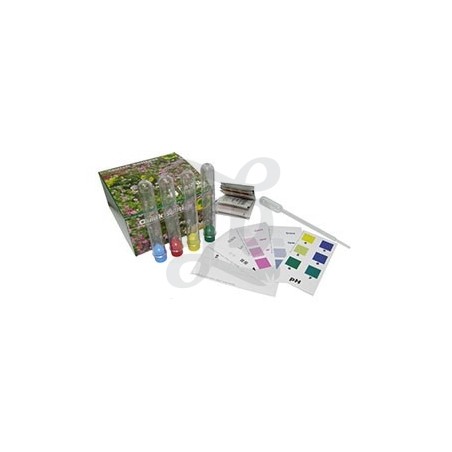


This super-fast test allows you to check the nutrients in your plants’ soil; nitrogen, potassium and phosphorus, as well pH levels.
Te quedan 35 para el envío gratis

Política de seguridad (editar con el módulo de Información de seguridad y confianza para el cliente)

Política de entrega (editar con el módulo de Información de seguridad y confianza para el cliente)

Política de devolución (editar con el módulo de Información de seguridad y confianza para el cliente)
Usually joint purchase

Información del producto
This fast NPK & pH test is perfect for checking the amount of macro-nutrients in your plants’ soil, which are the most important type of nutrients; NPK. You can also check the pH levels of your soil, allowing you to optimize your plant feeding, getting the best possible results; affordable and simple.
This box comes with 10 tests. Each one contains four different test tubes so that you can check each parameter individually. All you have to do is grab some substrate from your plant and put it into some distilled water, enough to fill the four tubes.
You’ll need to know what part of the substrate to take for your test; if you use the top layer of substrate you won’t get accurate results, as it’s the part of the substrate that contains the least amount of nutrients due to the fact that they’re all dragged down when you water your plants. You should try and get a sample for the middle of the flowerpot, or at least 10-15 cm down into the soil. Perfect to use with Boom Nutrients Light Mix.
In order to test the NPK in your substrate, you’ll need to prepare a cup of substrate from the middle or lower part of your flowerpot and mix it with 8 cups of distilled water. Mix it well and let it sit until the soil is fully settled on the bottom. The idea here is to get water from the top without getting any substrate in the test tube.
Important:
In order to get correct results from pH, N P and K tests, make sure there is no substrate in the water you’re testing. In order to do this, use a dropper to get the water. Make sure to press the dropper out of the water, and then place it in the water and let go very slowly so no substrate is absorbed.
You might also like
Lo has podido ver en



